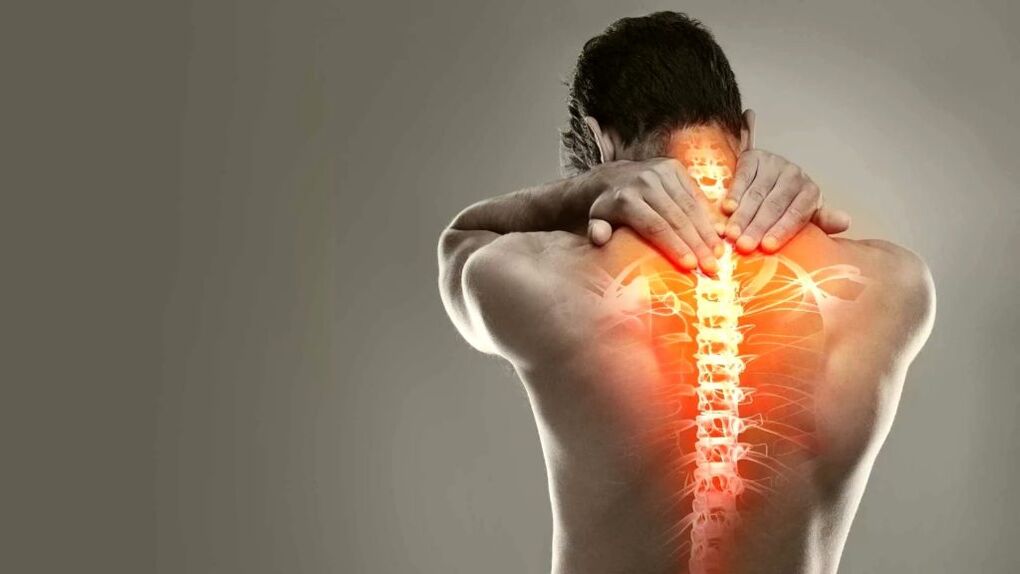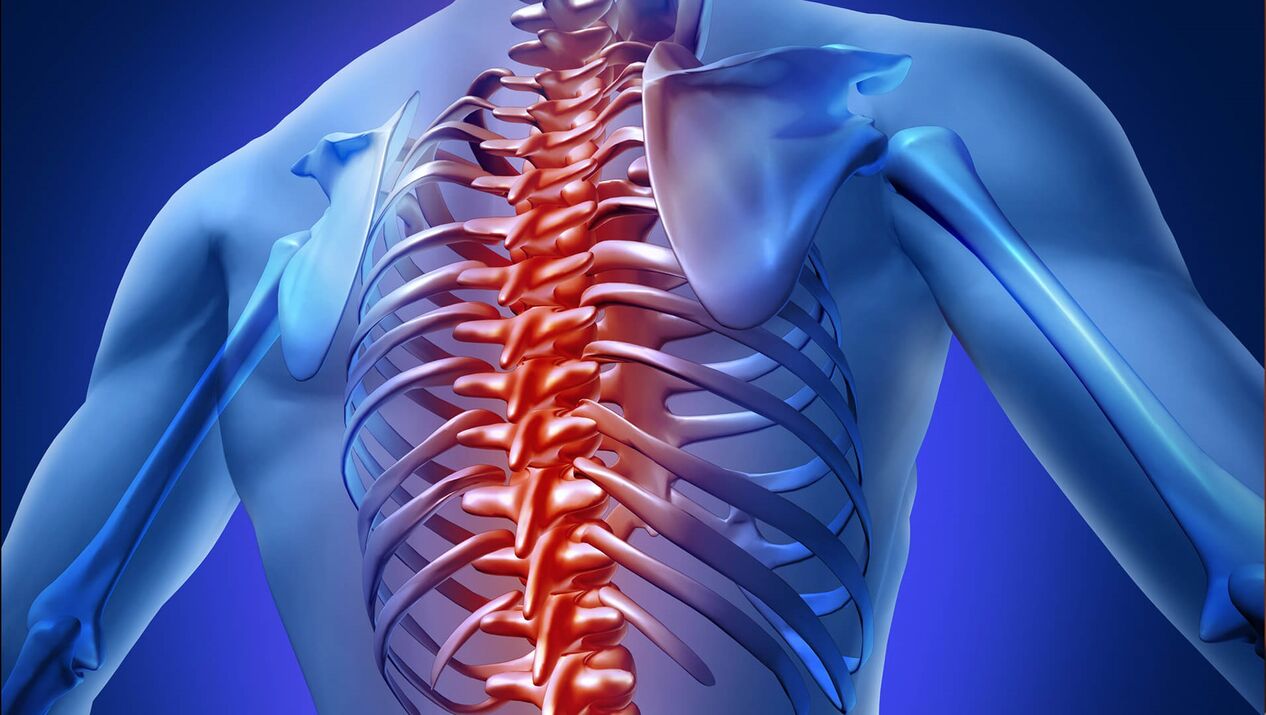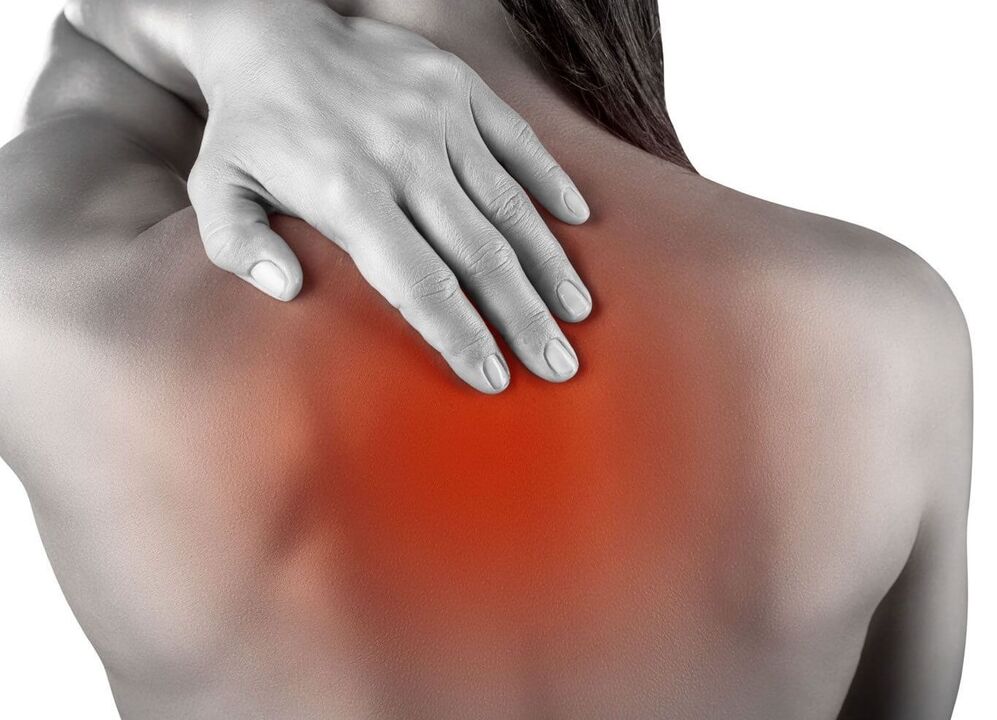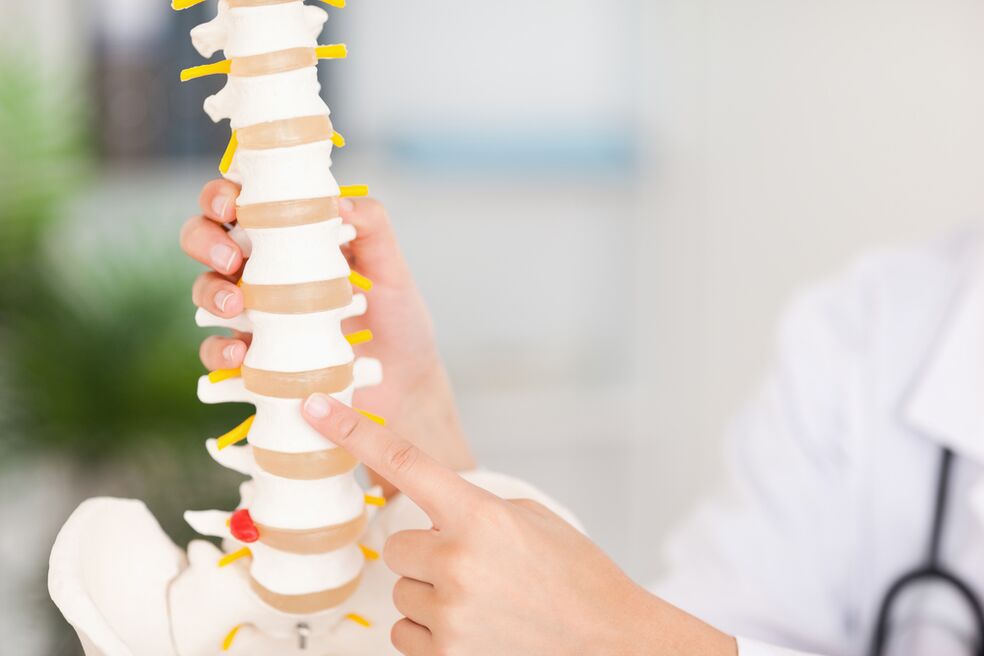
Osteochondrosis - dystrophic and degenerative changes in cartilage and bone tissue. Osteochondrosis of the spine can occur in the cervical, thoracic or lumbar region. The development of the disease leads to the destruction of ligaments, joint structures, intervertebral discs.
Osteochondrosis of the spine in the thoracic region is uncommon. This is due to the characteristics of its structure. Its mobility is lower than in the cervical and lumbar regions. Part of the load is taken by the ribs and sternum. Pathological danger in the difficulty of diagnosis. The symptomatology is similar to other diseases, it is detected very late, which complicates the treatment process.
Causes of the disease

The development of thoracic osteochondrosis is associated with metabolic disorders and increased load on the intervertebral discs. Inside the intervertebral disc is the pulposus nucleus, surrounded by annulus fibrosus. If damaged, the kernel will dry out and lose its amortization quality. As a result of degenerative processes, inflammation and compression of nerve fibers in the spinal cord occur.
The causes of osteochondrosis can be:
- heredity;
- intervertebral hernia;
- presence of osteophytes;
- poor blood supply to the spinal cord due to constriction of blood vessels;
- disorders of mineral metabolism (especially calcium deficiency);
- curvature of the spine, creating an unequal load on the discs;
- collapse, rot, trauma to the thoracic region as a result of shock;
- strength sports, regular weight lifting;
- passive lifestyle.
Symptoms and sensations with thoracic osteochondrosis
Several factors affect the clinical picture of pathology:
- degree of spinal cord injury;
- age of the patient;
- stage of the pathological process (exacerbation or remission).
The symptoms of thoracic osteochondrosis are characterized by diversity and nonspecificity, so the disease is often confused with other pathologies.
The main symptoms of thoracic osteochondrosis:
- Dorsago - a sharp, sudden pain in the chest and back ("chest lumbago"), the patient feels shortness of breath.
- Dorsalgia is a small pain in the affected vertebrae that develops gradually over several weeks. The pain may be exacerbated by deep breathing, bending to the side and forward, as well as prolonged stay in a static position.
Severe lumbar pain and respiratory problems are associated with intercostal neuralgia in which nerve roots are compressed. The intensity of the pain usually increases in the afternoon and disappears after a night's sleep.
Among the neurological symptoms:
- impairment of limb sensitivity;
- congestion of the heart muscle;
- lung syndrome;
- tingling, burning, numbness of the skin;
- convulsions and muscle spasms;
- sensation of a foreign object in the pharynx when osteochondrosis is localized in the upper thoracic segment.
Intercostal neuralgia is a symptom of degenerative-inflammatory pathologies of the spine (osteochondrosis, vertebral displacement, scoliosis). However, its appearance is similar to the symptoms of various diseases of the peritoneal organs and thoracic region.
Note!Often the pain occurs in the upper zones of the thoracic region, gradually covering it completely, as well as in the area of the shoulder blades (reminiscent of angina pectoris). Pain in the right hypochondrium occurs with osteochondrosis of the middle thoracic region. They may be diagnosed with pancreatitis or cholecystitis. Pain in the gastrointestinal tract occurs with damage to the lower segment of the thoracic region of the spine, which mimics intestinal disease.
Stages of disease development

The degree of development of the disease is associated with pathological disorders of the spine, characterized by certain clinical symptoms.
There are 4 stages in the development of the disease:
- 1st degree- the appearance of cracks inside the fibrous ring, after which the fluid of the nuclear pulp penetrates it. Only a localized pain syndrome is visible in the affected area. There may be pain in the heart muscle, muscle cramps.
- 2nd degree- Abnormal mobility between the vertebrae, subluxations in the chest. Anxiety and increased pain are felt during prolonged static posture or movement.
- 3rd degree- Rupture of the annulus fibrosus extending beyond the pulposus nucleus. Intervertebral hernias occur. This causes severe back pain, loss of mobility and other symptoms.
- 4 degrees- pathological processes extend beyond the spine. Degenerative-dystrophic changes involve paravertebral ligaments, fibrosis develops.
Diagnostics
Radiography is highly informative. The presence of pathology is indicated by:
- uneven disc edges;
- expansion and intensification of uncinate processes;
- reduction of the height of the discs, deformation of their shape;
- presence of osteophytes.
X-ray contrast studies are sometimes performed. The contrast agent fills the destroyed disc, which allows to determine the degree of indifference to the pathological process. MRI and computed tomography are no less informative.
Effective treatment methods
How to treat osteochondrosis of the thoracic region? The approach to therapy should be comprehensive. It is necessary to take into account the stage of development of the disease, the degree of destructive processes, the general condition of the patient.
Drug therapy
Several groups of drugs are used in the treatment of thoracic osteochondrosis.
- NSAIDs and muscle relaxants;
- Glucocorticosteroids. Their therapeutic effect is more pronounced than that of NSAIDs, but the risk of side effects is higher.
- Chondroprotectors. Chondroprotective agents are believed to help repair damaged cartilage tissue. However, their effectiveness has not been conclusively confirmed.
- Diuretics are used for a short time to relieve swelling of suffocated nerve fibers during exacerbation of osteochondrosis.
Folk remedies and recipes

It is used more often during remission of the disease and only as an adjunct treatment.
Treatment of osteochondrosis at home using traditional medicine:
- Pour 30-40 g of chopped celery root with 1 liter of boiling water. Insist 8 hours. Drink 1 dessert spoon three times a day.
- Melt 150 g of lard with steam. Add 2 tablespoons of wax to it. Heat for 15 minutes. Add 1 tablespoon of ammonia. Rub problem areas twice a day. Keep in a cool place.
Massage and exercise therapy
One of the most effective therapeutic measures for osteochondrosis is massage. It helps to relieve muscle spasms, improve blood supply to the problem area and normalize the functional state of the spine. Vibration massage is recommended as the disease progresses. After reducing the clinical manifestations, you can take a course of classic massage.
In grade 3 thoracic osteochondrosis, massage is not recommended in the presence of an intervertebral hernia. This can aggravate the patient's condition.
The purpose of physical therapy and gymnastics for osteochondrosis is to improve the mobility of the intervertebral joints and strengthen the muscular organ. Exercise therapy allows you to relieve muscle spasms and relieve stiffness in the spine. Classes should be conducted daily under the supervision of an experienced teacher. Their plan is developed individually for each patient.
Power features
Basic principles of proper nutrition in the treatment of thoracic osteochondrosis:
- large amounts of protein in the diet;
- removal of oily and fried products;
- food should be boiled or baked.
Salt should be excluded from the diet or significantly limited. Avoid fizzy and caffeinated drinks. It is better to replace them with herbal teas and natural juices. To increase the synthesis of cartilage tissue, it is useful to include in the diet chondroitin jelly, jelly, jelly. You need to eat dairy products to get enough calcium for bone health. Compliance with proper nutrition prevents the development of pathological processes.
Prevention measures
It is recommended to take preventive measures as early as possible and to follow them regularly to prevent the development and exacerbation of destructive processes in the thoracic spine.

Recommendations:
- do special exercises for the back every day;
- to give up addictions;
- eat a proper and balanced diet;
- normalize weight;
- you should warm up for 10 minutes every hour with sedentary work;
- swimming, water aerobics;
Thoracic osteochondrosis is less common compared to cervical and lumbar. However, the consequences for the body are no less dangerous. Due to the similarity of symptoms with other pathologies, it is very difficult to detect in the early stages. Therefore, it is important to always monitor the health of the spine and take all measures to prevent pathological destruction.













































